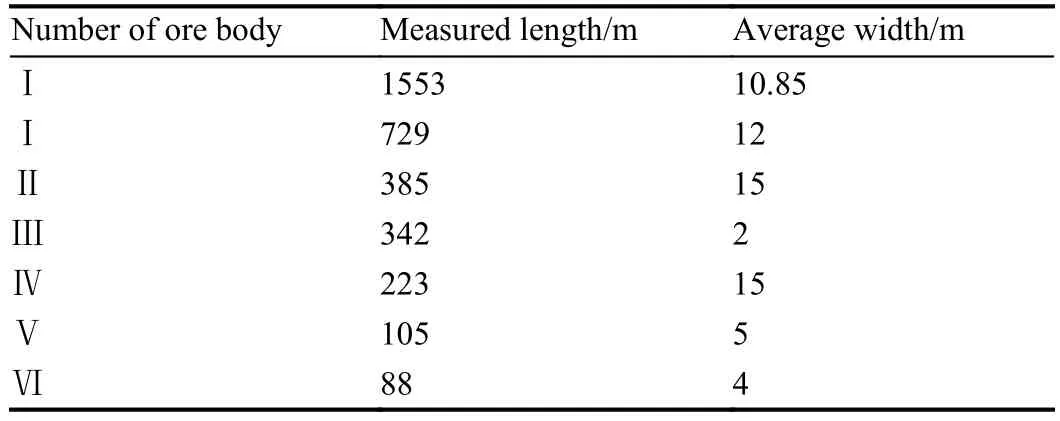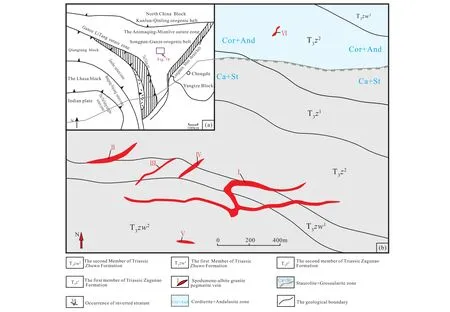Discovery of the pegmatite lithium veins with predicted super-large size resources in the Sizemuzu district of the Keeryin, China
Xiang-yuan Yue, Xiong Zhou, Yi Zhang, Da-xing Gong, Yu Zhou, Li-ping Luo
Institute of Multipurpose Utilization of Mineral Resource, Chinese Academy of Geological Sciences, Chengdu 610041, China
1. Objectives
Keeryin rare metal ore district is located at the intersection of Markam, Jinchuan and Rangtang counties. More than 1000 pegmatite dykes are associated with the Keeryin granite pluton. These pegmatite dykes are the major source of industrial spodumene ore bodies. Based on the previous studies, we chose Keeryin rare metal ore district as the key target area for geology survey. In this study, we discovered six pegmatite lithium veins in the Sizemuzu district of the Keeryin. Moreover, we study the distribution of regional ore deposits and metallogeny, delineate prospecting target and evaluate the mineralization potential of Lithium.
2. Methods
The results presented here are based on the detailed field geological surveys such as comprehensive detection of largescale geological, geophysical, geochemical explorations,chemical analyses and resource estimation.
3. Results
The newly discovered Sizemuzu pondumene deposit is located at the south of Riduojier inverted anticline and the northeast part of the Songpan-Garze orogenic belt (Fig. 1a).The ore bodies developed in gray middle to coarse-grained albite granite pegmatite veins crosscutting the contact metamorphic zones between Keeryin two-mica granite the Zhuwo and Zagunao formations.
The granitic pegmatite is full of veins with lithium mineralization. The ore bodies are lenticular, which is consistent with the pegmatitic vein shape. The ore bodies occur as veins and bedding, with NNE and SW extending.The ore bodies are inclined to southeast with the dip angle of 30° to 58°. The six major ore bodies are ranging from 88 m to 1553 m in length, and 2-35 m in width (Fig. 1b; Table 1). The first ore body is the largest one (Fig. 1), with 1553 m long and about 12 m thick.

Table 1. Characteristics of the seven ore bodies.

Fig. 1. (a). Tectonic map shows the location of the Sizemuzu mining district (Xu ZQ et al., 2018). (b) Simplified geological map of the Sizemuzu mining district, Sichuan, China.
The deposit is dominated by albite spodumene granite pegmatite (95%) with minor albite lepidolite granite pegmatite (5%). Ore minerals are mainly composed of spodumene (10%-25%), lepidolite (15%-10%), Rb-bearing microcline (0-30%) with minor beryl and trace columbitetantalite. Gangue minerals are composed of quartz(25%-40%), microcline (15%-40%), albite-oligoclase(25%-40%). The main economic composition of ore is spodumene,and the Li2O content is 0.40% to 3.60% with an average of 1.50%. The other associated economic components are Nb2O5(0.009%), Ta2O5(0.004%), BeO (0.04%), Rb2O(0.11%), and Sn (0.04%).
The ore textures are aplitic texture microtek and coarsegrained texture. The ore structures are mostly massive, taxitic,disseminated and banded structures.
The mining area is in the outer contact zone of the granite body in the eastern part of the Keeryin granite. All pegmatite veins are genetic related to this granite.
4. Conclusion
In this study, we find six pegmatite spodumene veins in the Sizemuzu district of the Keeryin. The statistic results of the six spodumene veins show that ore bodies mostly have thickness more than 1/3 length of the veins. Based on the preliminary estimate of one third of the vein length inferred extending, the super large Sizemuzu deposit could contains Li2O prospecting resource over 0.5 Mt and Rb2O resource over 3000 t, which have great potential for prospecting. These resources will play a key role on construction the "China Lithium Valley" of the Aba Prefecture.
Acknowledgement
This study was financially supported by the Geological Survey of China (DD20160074).
- China Geology的其它文章
- Deep Continental Scientific Drilling Engineering Project in Songliao Basin: progress in Earth Science research
- Main technical innovations of Songke Well No.2 Drilling Project
- Preliminary results of environmental monitoring of the natural gas hydrate production test in the South China Sea
- Episodic crustal growth in the Tanzania Craton: evidence from Nd isotope compositions
- Origin of natural sulfur-metal chimney in the Tangyin hydrothermal field, Okinawa Trough: constraints from rare earth element and sulfur isotopic compositions
- Exploration and research progress of shale gas in China

